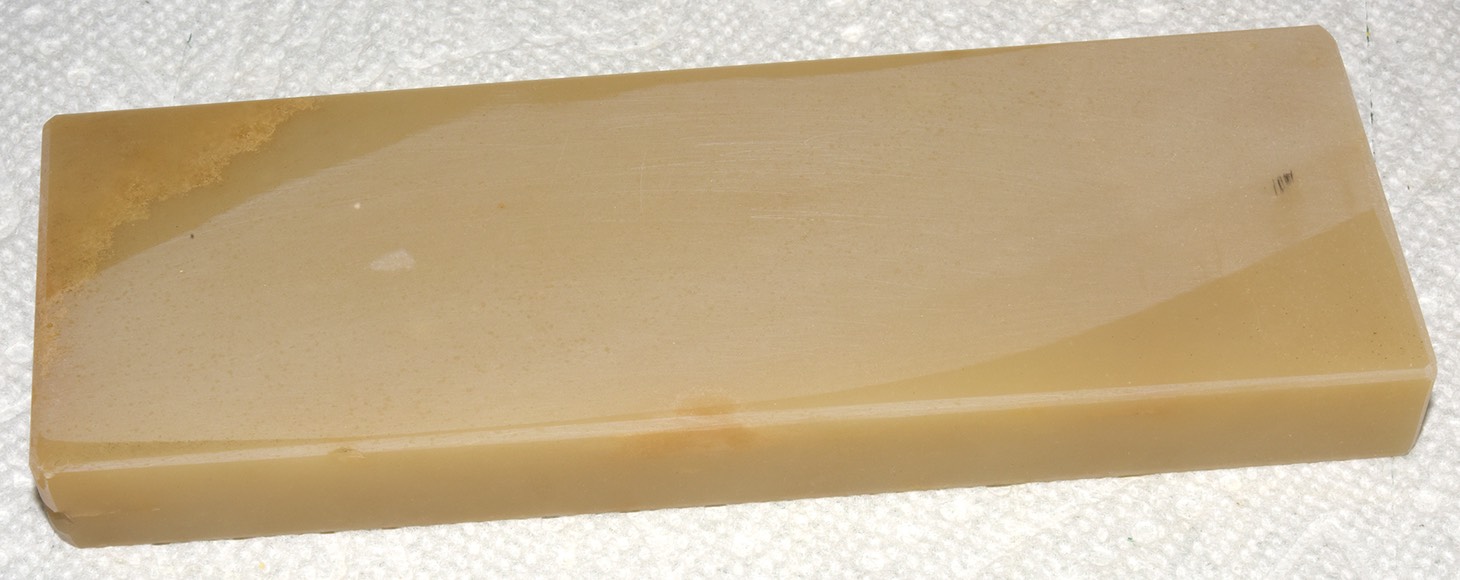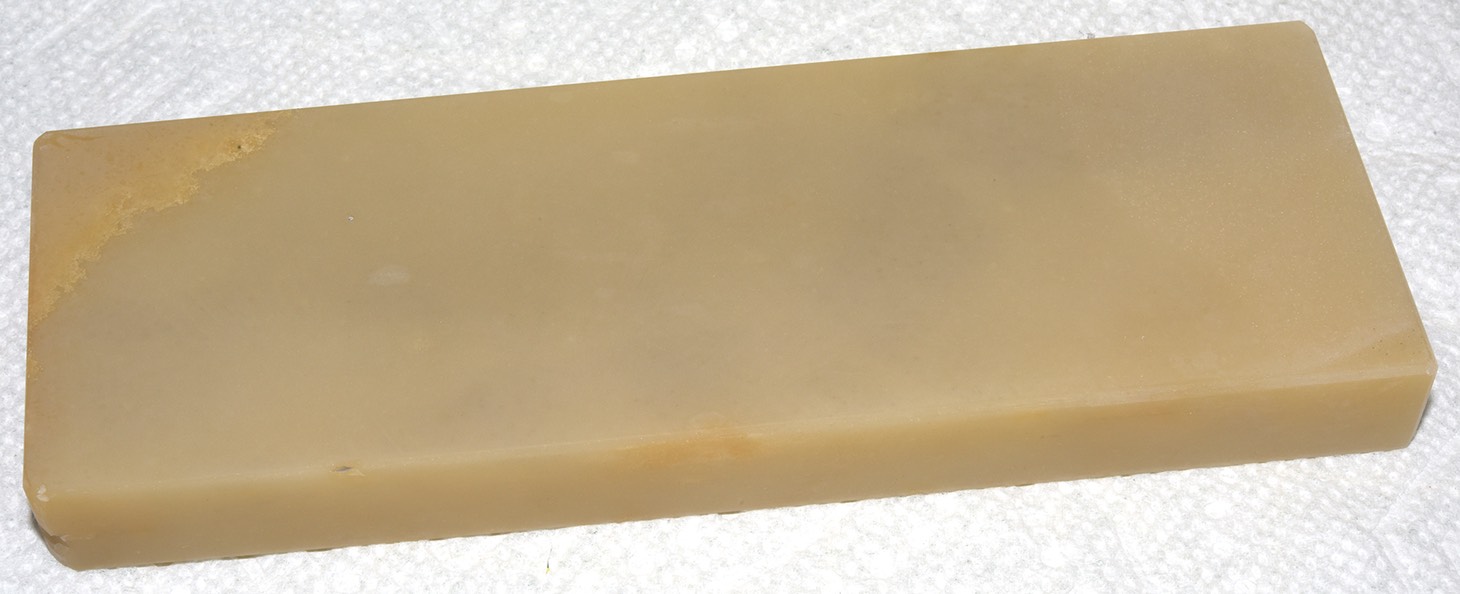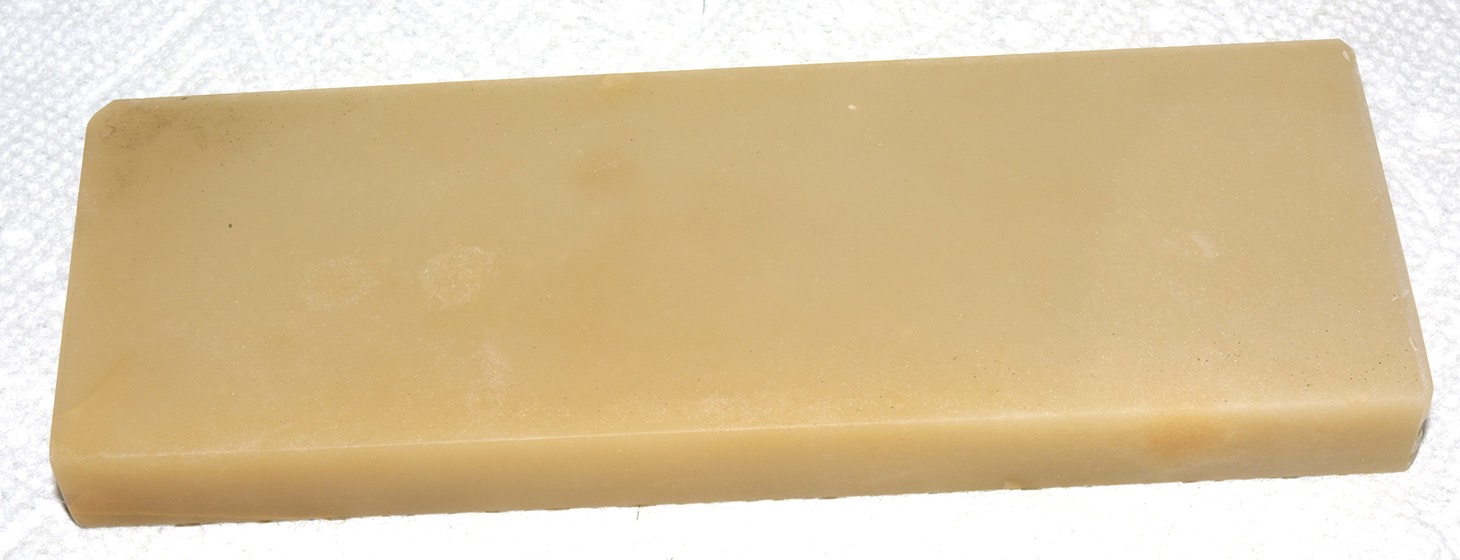
What we have here, is an early 1900s Pike Hard Arkansas stone. In today’s market, this is what we call a ‘Translucent Arkansas’. In these photos, you see an oval shape left by my lapping plate. Inside the oval, the stone is pale with just a hint of ‘butterscotch’ coloring. Outside the oval, the yellow butterscotch tone is much richer, deeper and darker.
Sometimes though, not all that glitters is gold. Now, please do note that I am not saying that every so called ‘butterscotch’ Arkansas stone is just an old used stone that is loaded with old and oxidized machine oil. But in the photos above you can see that this particular stone is, at least, partially that. It’s a grand old stone, it is an extremely high-quality piece of Arkansas’ finest Novaculite. The last two photos show the top lapped and the back side which I did not touch. There does seem to be some ‘yellowing’ in the stone, even on the lapped surface.
The presence of oil in/on the stone has a part in the coloring. How big a part, I don't know. But oil is, for sure, a player in the story.
I cut a piece off one end, so I had a cross section to view. Overall, the cut was predominantly white/pale but not pure white like the smaller stone in the photo above. There appeared to be yellowish shading that faded from the stone's working top toward the bottom... so, on one hand that could be from oil ingress. On the other hand, it could just be the stone. Adding to this, the upper surface in the stria of the cut left by the saw was white as white gets. Applying clear oil - very clear, crystal clear oil, brought the buttery color back into play.
As for working differences between the butter stones and the pure white ones, I'm not seeing it. I've been through many combinations of white/yellow/butter/grey/etc and when i lap them all the same way, they all behave the same way.

